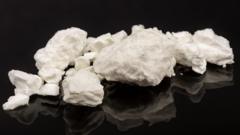In a world increasingly driven by safety and design standards, an eccentric Facebook group called "Death Stairs" has emerged, showcasing staircases that teeter on the edge of hazardous. With nearly 800,000 members, this online platform celebrates stairs that pose a challenge to climbers worldwide. One of its highlights is a staircase from Kevin Reid's childhood home in Dublin, Ireland, created from pipe fittings and resembling a laddermore than a traditional staircase.
Reid fondly recalls the striking green staircase as a part of his upbringing, never associating it with danger until it was posted on the group. His father built the staircase as part of a two-story addition, focusing on practicality rather than conventional aesthetics. “You wouldn’t want to take it down in sock soles, but they produce a nice ringing sound when you dash down,” he reflected, emphasizing its solid construction.
The group curates what it deems "deathstairs" that vary widely in design: ranging from steep, triangular-shaped steps, an elegant glass spiral with mirrored walls, to wooden stairs carved into the cliffs of New Zealand. All share a common thread—an almost reckless disregard for conventional safety, providing a thrill for anyone bold enough to ascend or descend them.
Drawing attention to the unconventional nature of these stairs, the group invites others to showcase their experiences and creations, proving that in the realm of architecture, danger can sometimes ignite fascination and community. Whether it’s for amusement or genuine curiosity, the "Death Stairs" phenomenon is a testament to how unconventional design captures human interest across the globe.

















